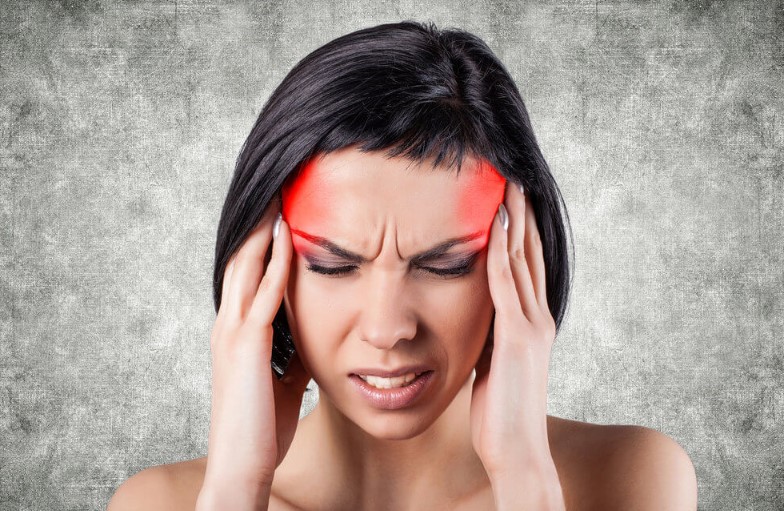Millions of individuals throughout the world suffer from excruciating migraine discomfort. Severe headaches, sensitivity to light and sound, dizziness, and general discomfort can interfere with day-to-day activities. Although there isn’t a permanent cure for migraines, there are a number of treatments that can lessen the severity and length of the pain. Let’s look at some proven treatments suggested by a neurologist in Islamabad that can help people with migraines.
1- Determine Triggers and Change Your Lifestyle
Finding migraine triggers is an essential first step in managing them. People can learn a lot about what may be causing their migraines by maintaining a migraine diary and documenting possible triggers. Stress, specific foods (including old cheese, chocolate, and processed meats), sleep deprivation, hormone changes, and environmental variables (such as bright lights or strong odors) are a few common triggers.
Making the appropriate lifestyle changes is crucial to lowering migraine frequency and intensity once triggers have been identified. Techniques for reducing stress, such as mindfulness meditation, regular exercise, and counseling or therapy, can greatly reduce migraine triggers associated with stress.
2- Apply Cold or Hot Compresses
Applying hot or cold compresses is a straightforward but effective treatment for migraine pain. By changing blood flow and lowering inflammation in the affected area, both techniques work. While heat compresses ease stiff muscles and encourage relaxation, cold compresses are particularly beneficial for numbing the area and reducing discomfort.
Apply a cold compress to the forehead, temples, or back of the neck by using a cold pack, a bag of frozen vegetables, or even a damp cloth dipped in cold water. For 15 to 20 minutes, or until you feel relief, leave it in place. The chilly environment helps to constrict blood vessels, which lessens the pulsating agony linked to migraines.
3- Practice Relaxation Techniques
Stress is a frequent migraine trigger, and using relaxation techniques can greatly decrease the frequency and intensity of attacks. Using relaxation techniques promotes mental and physical calmness, eases tension, and reduces stress.
Exercises that deepen breathing are an easy yet effective way to relax. Choose a comfortable position, shut your eyes, and inhale deeply and slowly. Breathe slowly through your mouth after taking a big breath through your nose, letting your stomach expand. With each exhale, concentrate on the sensation of your breath and release any tension or stress.
4- Adequate Sleep and Regular Sleep Patterns
The management of migraines depends on getting enough sleep and maintaining normal sleeping habits. Many people experience migraines as a result of sleep deprivation or irregular sleeping habits. A regular sleep schedule can improve the quality of your sleep and help your body’s internal clock function more normally.
Set a regular bedtime and wake-up time, including on the weekends. Each night, try to get seven to eight hours of sleep. Make your bedroom calm, cold, and dark to promote restful sleep. Reduce exposure to stimulating light before bed by removing electronics from the bedroom or using blue light filters.
5- Stay Hydrated and Maintain a Healthy Diet
A healthy diet and adequate hydration are important for managing migraines. It’s important to maintain adequate fluids throughout the day because dehydration can exacerbate migraines. Aim to consume eight glasses of water or more each day, varying your intake according to your activity level and the weather. Avoid drinking caffeine-containing beverages in excess, as these substances may make migraine symptoms worse for some people.
Maintaining a good diet will help avoid migraines, in addition to staying hydrated. It may be useful to recognize and steer clear of such triggers because some people see certain meals as triggers. Aged cheeses, processed meats, chocolate, and artificial sweeteners are examples of common trigger foods.
6- Over-the-Counter Pain Relievers
Mild to moderate migraines can be effectively treated with over-the-counter (OTC) painkillers. Ibuprofen and aspirin are two examples of nonsteroidal anti-inflammatory medications (NSAIDs) that are frequently used to treat migraine pain. These drugs act by decreasing inflammation and suppressing pain receptors.
It’s crucial to adhere to the suggested dose guidelines and safety measures when taking OTC pain medications for migraines. When a migraine starts or the symptoms start to get worse, take the medication right away. In general, taking the drug near the beginning of a migraine attack has better results.
Conclusion
Even though migraines can be difficult to manage, adding these proven treatments to your daily routine will help you feel better and lead a more fulfilling life. There are many effective methods for reducing migraine pain, including recognizing triggers, altering one’s lifestyle, using cold or hot compresses, practicing relaxation techniques, prioritizing enough sleep, maintaining a healthy diet, using over-the-counter painkillers, investigating herbal remedies and supplements with a doctor’s advice, and considering prescription drugs or Botox. To identify the best course of action for your particular circumstances, keep in mind that working closely with a healthcare professional is essential.
(Note: Is this article not meeting your expectations? Do you have knowledge or insights to share? Unlock new opportunities and expand your reach by joining our authors team. Click Registration to join us and share your expertise with our readers.)
